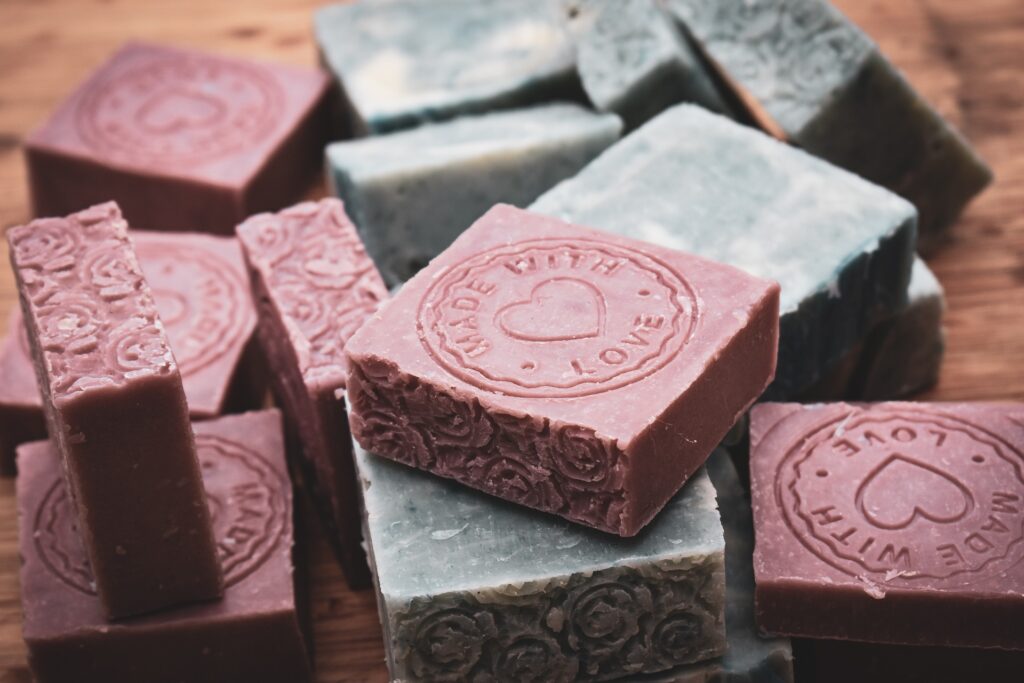The beauty industry is not always pretty. Each year, it produces 120 billion units of packaging, most of which end up in landfill. The demand for natural ingredients and packaging leads to deforestation, while the industry’s supply chain exposes workers to harmful chemicals and pollution. With growing awareness about environmental issues, Sustainable Beauty is rising and gaining popularity among consumers. In this article, we’ll explore what Sustainable Beauty really means for us and for our planet.
Table of Contents
What Is Sustainable Beauty?
In essence, Sustainable Beauty aims to meet today’s beauty needs without compromising the planet and future generations, promoting long-term environmental and social stewardship.
Sustainable Beauty focuses on responsible sourcing, natural ingredients, and eco-friendly packaging. Beyond products, it extends to energy-efficient manufacturing and salon operations, mindful water usage, effective waste management and fair treatment of workers, ensuring sustainable practices across every aspect of the industry.
What is the Difference between Clean, Green and Sustainable Beauty?
There are no legal definitions of these terms, and they are sometimes interpreted differently by brands, which causes confusion for consumers. In fact, they have distinct focuses:
Clean Beauty refers to products that are safe for humans and free from harmful ingredients, such as certain chemicals and toxins. It emphasises human health and transparency in its ingredients. However, “clean” doesn’t automatically mean sustainable or green, though there can be overlap.
Green Beauty extends the principles of Clean Beauty to environmental concerns. These products are designed to minimise environmental impact, often using natural and organic ingredients, ethical production practices, and eco-friendly packaging. However, watch out for Greenwashing, where products are falsely marketed as ‘green’.
Sustainable Beauty is a holistic approach that incorporates sustainability into the entire lifecycle of a product, from sourcing to disposal. Not only does Sustainable Beauty emphasise environmental responsibilities, but it also focuses on social responsibilities such as ethical sourcing, fair trade and cruelty-free testing.
In short, Clean Beauty focuses on human health and ingredient safety, while Green Beauty adds environmental factors. Sustainable Beauty takes a holistic view, including social responsibility and long-term environmental impact.
How Sustainable Beauty Benefits You?

Sustainable Beauty provides you with many benefits, here are the highlights:
1. Natural Ingredients for Healthier Skin
Sustainable Beauty products don’t contain harsh chemicals, they use natural ingredients that are gentler on the skin. These can lead to healthier skin, reducing the risk of irritation or allergic reactions, especially for sensitive skin. As shown in a report, over 40% of shoppers now prioritise natural ingredients in their beauty routines.
2. Transparency and Trust
Sustainable Beauty emphasises ingredient transparency and safety, which allows you to know exactly what you’re putting on your skin, building trust and confidence in the products you use.
3. Innovative Formulas
Sustainable Beauty brands encourage innovation, which means you can benefit from cutting-edge formulations that deliver effective results without harmful side effects.
4. Conscious Consumption
Sustainable beauty empowers you to make conscious choices that align with your values, supporting both environmental and social responsibilities.
How Sustainable Beauty Benefits the Planet?

Sustainable Beauty offers significant environmental benefits, here are some key areas:
1. Reducing Plastic Waste
One of the biggest environmental impacts of the beauty industry is packaging waste. Sustainable Beauty brands aim to reduce this by using minimal, recyclable, reusable or even compostable packaging. Some brands offer refillable options or packaging made from recycled materials.
3. Lowering Carbon Emission
Sustainable Beauty brands prioritise energy efficiency manufacturing, using less water and energy or switching to clean energy. Some brands also consider the carbon footprint associated with consumers using their products. For example, brands like Elemis designed their cleansing balm that works effectively with cold water to reduce the need for hot water.
4. Protecting Ecosystems
Sustainable Beauty products don’t contain chemicals that can pollute and harm the environment, like reef-safe sunscreens, which are formulated without toxic ingredients that could damage coral reefs and marine life.
5. Promoting Ethical Practices
Many sustainable beauty brands champion ethical sourcing, cruelty-free testing and fair treatment to workers. This means that products are developed without animal testing and sourced from suppliers who respect the environment and local communities, ensuring fair wages and sustainable farming practices.
Common Myths About Sustainable Beauty

Sustainable Beauty is often misunderstood, with some common myths clouding its true value:
Myth 1: Sustainable Beauty Is Too Expensive
Many believe that sustainable beauty products are more expensive compared to traditional options, but this is not always the case. For instance, Certified B Corp brands like Welada and UpCircle offer affordable options, making sustainable beauty more accessible. Plus, DIY beauty treatment using natural ingredients from your kitchen is a great budget-friendly option.
Myth 2: Sustainable Beauty Products Are Less Effective
Some people think natural ingredients are less effective than the conventional, chemical-based ones. However, the science behind Sustainable Beauty has come a long way. Brands now harness powerful natural ingredients that work wonders. Many are backed by clinical trials and certifications like COSMOS proving these products are just as effective, if not better.
Myth 3: Sustainable Beauty Is Just a Trend
Sustainable Beauty is not a temporary fad. It’s a growing movement driven by increasing awareness of environmental crises and consumer desire for sustainable practices. With over 40% of shoppers prioritising natural and sustainable products, more beauty companies are adopting long-term sustainability commitments, making it the new standard.
How to Identify Truly Sustainable Beauty Products

Identifying sustainable products can seem tricky, especially with the myriad of claims and marketing buzzwords. To simplify the process, I put together a quick guide to help you make informed choices:
1. Read the Ingredients
Start by examining the ingredient list. Are they made from natural, non-toxic ingredients? Sustainable Beauty doesn’t contain plastic microbeads, palm oil, coal tar and synthetic chemicals like parabens, phthalates, oxybenzone, octinoxate, sulphates, preservatives like formaldehyde, and chemical-based fragrances.
2. Check for Certifications
Brands that commit to sustainability often have accreditation to prove it. Here are a few examples of certifications to look for:
- B Corp Certification: Measuring a company’s entire social and environmental impact, Certified B Corporations are companies that have been verified to meet high standards of social and environmental performance, transparency, and accountability.
- Ecocert: Ecocert standard makes sure that the ingredients are derived from renewable resources and manufactured using environmentally friendly processes.
- Leaping Bunny (cruelty-free): The best assurance that a company has made a genuine commitment to end animal testing.
- COSMOS: The criteria that companies must meet to ensure that their products are genuine organic or natural cosmetics produced to the highest feasible sustainability practices.
- Fairtrade: Fairtrade certification ensures that farmers and workers receive a fair deal, and that farms prioritise workers’ rights and environmental standards.
3. Assess Packaging
Packaging plays a crucial role in sustainability. If your facial cream comes in a recyclable glass jar rather than the standard plastic tube, that’s your first sign its packaging is more eco-friendly. Choose products with minimal, recycled, recyclable or biodegradable packaging materials. Refillable options are even better as they significantly reduce waste and promote a circular economy.
4. Consider the Brand’s Overall Practices
Investigate the brand’s overall practices to make sure they prioritise ethical sourcing, fair treatment of workers and transparency in their supply chain. Also look at their engagement in environmental and social sustainability initiatives, such as participating in programs like 1% for the Planet or contributing to community projects.
5. Beware of Greenwashing
Be cautious of vague terms like “natural” or “eco-friendly” without concrete evidence. Greenwashing, where companies market themselves to look more sustainable than they actually are, is becoming increasingly common. Check out How to Spot Greenwashing: A Shopper’s Guide for practical tips on identifying misleading claims.
How to Transition to a Sustainable Beauty Routine

Transitioning to a sustainable beauty routine doesn’t have to be overwhelming. You can take small steps and make gradual swaps, here’s how to get started:
1. Evaluate Your Current Product
I strongly suggest starting by reviewing the products you already have, use them up before replacing them with sustainable options. This will avoid unnecessary waste.
2. Choose Products that Meet Your Needs
As you shop for new products, ensure they address your specific skincare needs, like hydration or sun protection. Sustainable Beauty can still cater to your skin’s needs without compromising effectiveness.
3. Swap Products Gradually
Instead of replacing everything at once, transition gradually by swapping out items as they run out. Starting with essentials like cleansers and moisturisers, then expand to other areas of your routine.
4. Simplify Your Routine
Simplify your routine by opting for products that serve multiple purposes to reduce clutter and waste. For example, choose a tinted moisturiser with SPF or a makeup balm that can be used for lips and cheeks can cut down on the number of products you need.
5. Try DIY Beauty
Why not give it a go to create your beauty treatments using natural ingredients from your kitchen? This is a fun and budget-friendly way to embrace sustainable beauty!
6. Pay Attention to Packaging
Choose products that come in recyclable, refillable, or minimal packaging. The goal is to reduce plastic waste and environmental impact.
7. Stay Committed
Transitioning to a sustainable beauty routine is an ongoing process. Stay informed about new sustainable products, brands, and innovations to ensure your routine stays aligned with your values. Small, consistent changes will make a big difference over time.
I hope you’ve found this article helpful, and now feel empowered to begin your journey toward a more sustainable beauty routine. By making informed choices, you’re not only benefiting your skin but also making a positive impact on the environment. In my next article, I’ll be highlighting some incredible British Sustainable Beauty brands that you might want to explore, so stay tuned for those recommendations!



